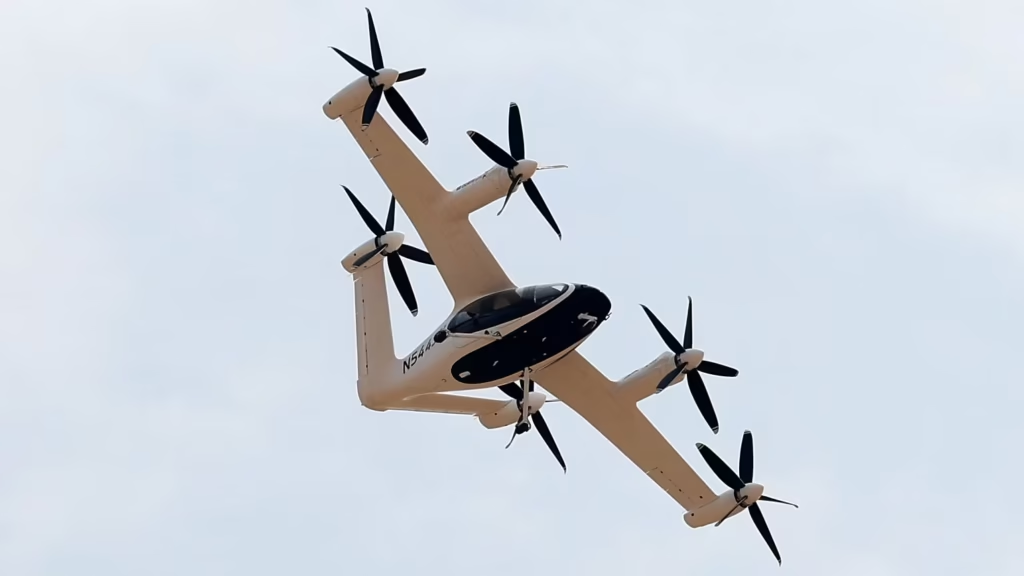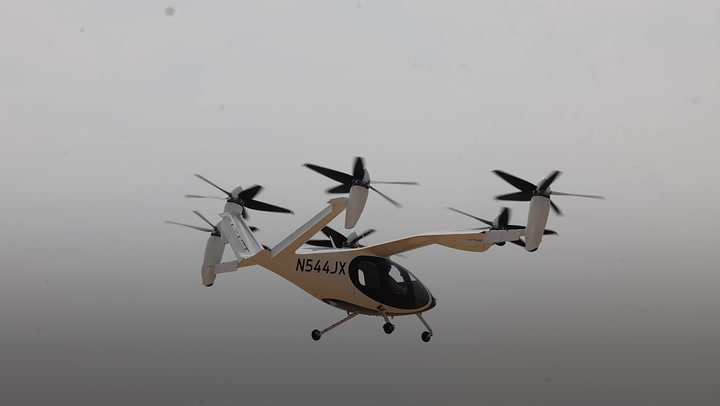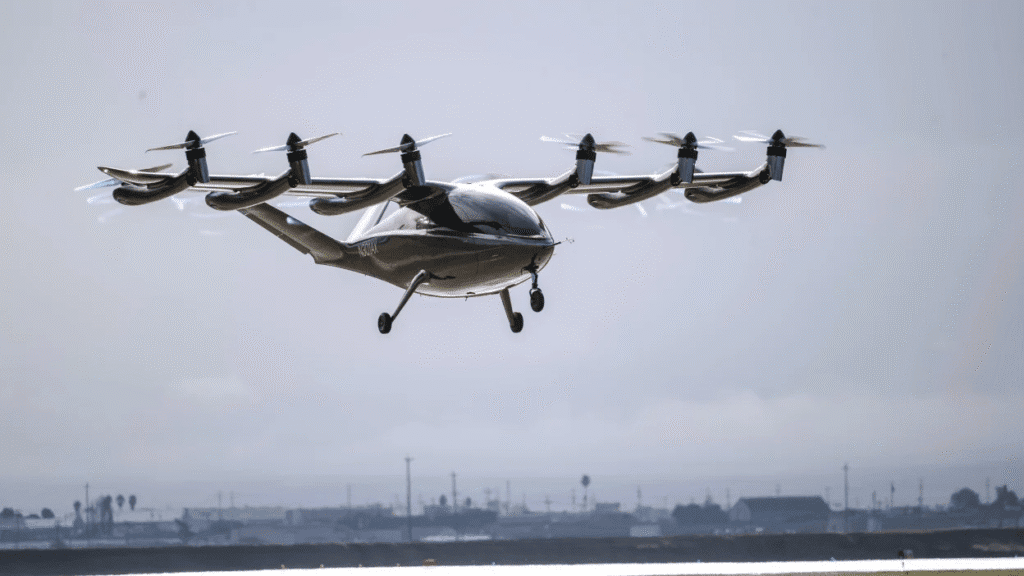The UAE hospital flying taxi port is set to revolutionize the way patients access medical care in the country. This groundbreaking project, located at Cleveland Clinic Abu Dhabi, represents a major step in the integration of advanced air mobility into healthcare services. By providing rapid transport options for patients and critical medical supplies, the flying taxi port aims to significantly reduce travel times, improve the efficiency of organ transport, and enhance overall patient outcomes.
As the UAE continues to embrace technological innovation across various sectors, the introduction of the hospital flying taxi port reflects a forward thinking approach to solving long-standing challenges in healthcare accessibility and emergency medical response.
What Is a Hospital Flying Taxi Port?
A hospital flying taxi port, also called a vertiport, is a dedicated landing and takeoff area designed specifically for electric vertical takeoff and landing aircraft. Unlike traditional helicopters, eVTOLs are powered by electric engines, which makes them quieter, more environmentally friendly, and cost effective over the long term.

In a hospital context, the vertiport allows for the rapid transport of patients, doctors, medical teams, and critical supplies directly to and from the facility. The goal is to bypass road congestion, providing a faster and more reliable route for urgent healthcare needs.
For Cleveland Clinic Abu Dhabi, this innovation promises to transform emergency response times, making it possible to deliver critical care faster and more efficiently than ever before.

The Role of eVTOL Aircraft in Healthcare
The flying taxi port is designed to operate with eVTOL aircraft, a new generation of air vehicles that combine the vertical takeoff and landing capabilities of helicopters with the efficiency and quiet operation of electric propulsion. These aircraft can carry several passengers at once and are ideal for transporting patients or medical teams quickly over urban areas.
Unlike helicopters, which can be noisy and fuel intensive, eVTOLs are designed to produce minimal noise and emissions. This makes them particularly suitable for use in sensitive environments such as hospitals, residential areas, and city centers.
The adoption of eVTOLs for healthcare is part of a broader trend in the UAE toward sustainable, high tech solutions. By integrating these aircraft into hospital logistics, medical facilities can dramatically reduce travel times and improve patient outcomes.
How the UAE Hospital Flying Taxi Port Works
The flying taxi port at Cleveland Clinic Abu Dhabi will operate as a fully integrated transport hub. Patients in need of urgent care can be picked up from predetermined locations across the city and flown directly to the hospital’s vertiport. Similarly, organs and medical supplies can be transported quickly and efficiently to meet the strict time requirements of transplant procedures.
The port is equipped with safety protocols, boarding areas, and charging infrastructure to support the eVTOL fleet. Medical staff will coordinate closely with the transport team to ensure that every flight aligns with patient care needs and hospital schedules.
This seamless integration of air mobility into hospital operations represents a significant step forward in the evolution of emergency medical logistics.

Benefits of the UAE Hospital Flying Taxi Port
Reducing Travel Time
One of the most important advantages of the flying taxi port is the dramatic reduction in patient travel time. In traditional urban environments, traffic congestion can delay emergency medical services, sometimes with life threatening consequences. The flying taxi port provides a direct, airborne route to the hospital, enabling patients to reach critical care in minutes rather than hours.
For patients with serious conditions, such as heart attacks, strokes, or trauma injuries, this reduction in travel time can make a crucial difference. It ensures faster access to medical expertise and advanced treatment facilities, ultimately improving survival rates and recovery outcomes.
Improving Organ Transport Efficiency
Organ transplants are highly time sensitive procedures. Every minute counts when transporting organs to ensure they remain viable for surgery. The flying taxi port allows for rapid delivery of organs, bypassing traffic and logistical delays that can occur on the ground.
By reducing transport times, hospitals can increase the number of successful transplant operations, save more lives, and improve the overall efficiency of organ transplant programs. This also allows for better coordination between donor hospitals and recipients, streamlining the entire transplant process.
Enhancing Patient Access
Many patients in the UAE live far from top tier medical facilities or in areas prone to traffic congestion. The flying taxi port provides an innovative solution, offering a faster and more reliable way for patients to reach hospitals.
This improved accessibility is especially valuable for patients needing specialized treatments not available locally. By bridging the gap between remote locations and advanced medical care, the flying taxi port ensures that high quality healthcare is available to a larger population, regardless of geographic constraints.
Environmental Benefits
eVTOL aircraft are powered by electricity, which reduces the environmental impact compared to traditional fuel based helicopters. They generate lower emissions, contribute to cleaner air, and operate with less noise pollution.
As the UAE continues to pursue ambitious sustainability goals, integrating eVTOL aircraft into healthcare aligns with national initiatives to reduce carbon footprints and support eco friendly technological solutions.
Boosting Technological Innovation
The flying taxi port also serves as a platform for technological advancement. By adopting eVTOLs and vertiport infrastructure, the UAE is setting a benchmark for how innovative transport solutions can enhance critical services like healthcare.
This initiative encourages further research and development in urban air mobility, including software for flight coordination, advanced safety measures, and integration with hospital operations. Over time, this can create a more resilient, tech driven healthcare system capable of responding rapidly to emergencies.
Future Implications for Healthcare
The UAE hospital flying taxi port is more than just a transport solution; it represents a vision for the future of healthcare logistics. By demonstrating the effectiveness of airborne medical transport, the project could inspire similar initiatives across the region and worldwide.
Other hospitals may adopt flying taxi ports to improve emergency response, organ transport, and patient access. In addition, the broader adoption of eVTOL technology could extend to other critical services, such as disaster relief, medical supply delivery, and telemedicine support in remote areas.
The integration of flying taxis into healthcare infrastructure may also pave the way for new regulations, standards, and operational guidelines, ensuring safety and efficiency in urban air mobility.

Challenges and Considerations
While the UAE hospital flying taxi port is a groundbreaking innovation, several challenges must be addressed:
Safety and Regulation: Ensuring the safe operation of eVTOL aircraft in busy urban environments is critical. Authorities must establish clear safety standards, flight paths, and emergency protocols.
Cost and Accessibility: While the technology is promising, it must remain cost effective and accessible to patients to maximize its impact.
Integration with Hospital Operations: Efficient coordination between flight schedules, hospital staff, and emergency protocols is essential to fully realize the benefits of the flying taxi port.
Public Acceptance: Educating the public about eVTOLs, flight safety, and the advantages of airborne medical transport is important for widespread adoption.
Addressing these challenges will require collaboration between healthcare providers, aviation companies, government authorities, and technology developers.
The Vision Behind the UAE Hospital Flying Taxi Port
The flying taxi port reflects the UAE’s commitment to combining technological innovation with practical solutions to real world problems. It aligns with the country’s broader vision of becoming a global hub for advanced urban mobility, smart city development, and healthcare excellence.
By investing in such cutting edge projects, the UAE is demonstrating that healthcare infrastructure can evolve beyond traditional constraints, embracing modern solutions that prioritize patient well being, efficiency, and sustainability.
Conclusion
The UAE hospital flying taxi port is a transformative initiative that promises to redefine emergency healthcare, patient transport, and organ delivery. By reducing travel times, improving access to critical care, and supporting environmental sustainability, this project showcases how technology can solve some of healthcare’s most pressing challenges.
As Cleveland Clinic Abu Dhabi leads the way with this innovative approach, it sets a global example for integrating advanced air mobility into healthcare services. The success of the flying taxi port could inspire similar projects worldwide, creating a new standard for emergency medical response and patient centered care.
With careful planning, collaboration, and technological innovation, the UAE hospital flying taxi port is poised to become a cornerstone of modern healthcare, ensuring that patients receive the care they need, faster, safer, and more efficiently than ever before.
Do follow UAE Stories on Instagram
Read Next – Aston Martin Introduces DB12: The World’s First ‘Super Tourer’














